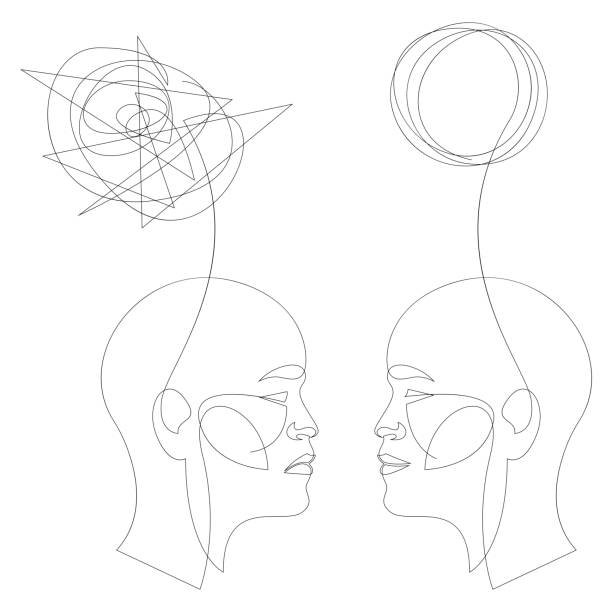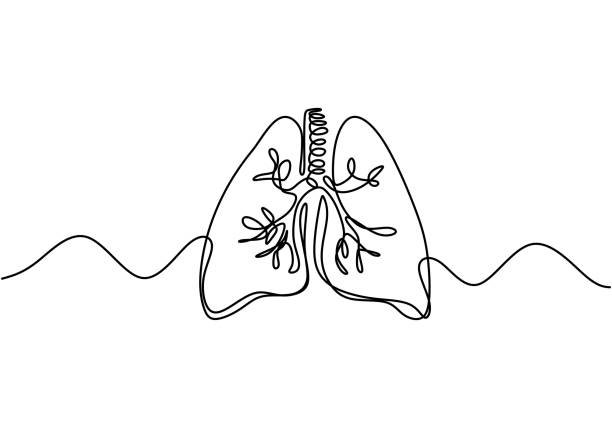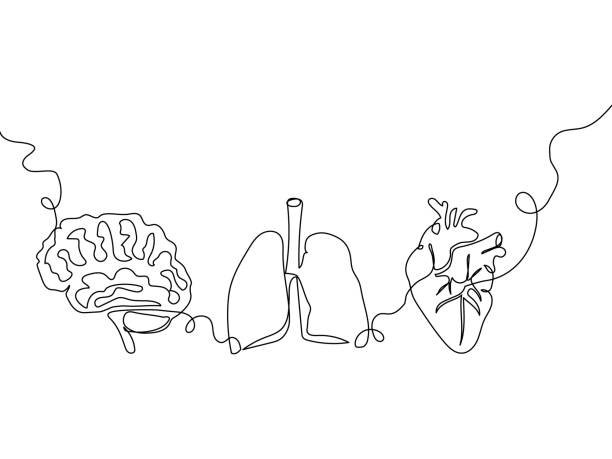What is a Dysregulated Nervous System?
Before we can begin to heal our nervous system, we first have to learn what is a dysregulated nervous system.
(Hint: It involves how we perceive ourselves and the world around us).
First we will get into nervous system dysregulation and symptoms of a dysregulated nervous system.
Then, we will learn how our bodies determine if we are safe or in danger, how our nervous system has different processes to keep us safe, and common emotional and physical responses to trauma.
Throughout this article, there will be reflective writing exercises to bring attention to how dysregulation may be showing up in your daily life.
At the end I will share more resources for practices to begin to heal a disregulated nervous system.
How Does Our Nervous System Impact Our Daily Life?
You probably know that our autonomic nervous system is in charge of many unconscious actions in our body like breathing, heart rate, body temperature, metabolism, and producing stress hormones.
But it is also plays a large role in determining if we are safe or in danger using parts of the brain beyond our conscious level of awareness.
This means that how we perceive if we are safe or in danger is something we feel in our bodies and isn’t something we can change by thoughts alone.
Think about something that bothered you recently. Maybe it was something your partner said to you or someone who cut you off while driving. It can feel like you are being inundated with thoughts that won’t seem to stop.
This is our autonomic nervous system in action receiving messages from the body based on our senses. These felt senses are then sent to our brain, where it makes up a story about what is happening.
The takeaway here is that the root of the information about our safety and our perception is from the body. By learning to recognize the signals from our body, we can use that information to better understand how we are truly feeling in the moment and where it may be coming from.
What Is a Dysregulated Nervous System?
Without our conscious awareness, we constantly scan our environment searching for cues of safety and danger in order to ensure we take appropriate actions to keep ourselves safe.
A regulated nervous system matches the appropriate action to level of perceived threat and returns back to equilibrium once the threat is gone.
For example, you are almost hit by a car when you are crossing the street. To respond to the perceived threat (the oncoming car), your heart rate increases, your muscles tense, your pupils dilate as your body moves into the sympathetic activation (fight/flight) to flee from the car. Once the car is gone and you are safe again, you return back to the rest and digest state (parasympathetic nervous system), you can notice your environment, and socially engage with the people around you.
This process of being able to self-regulate by seeing a threat, taking the appropriate level of action to match the level of threat and returning back to normal is called the window of tolerance. Most of us move through this cycles on a daily basis.
However, when chronic stress or traumatic events happen, it pushes our nervous system beyond its capacity to self regulate and causes dysregulation.
A dysregulated nervous system means that we are reacting based on a threat response in the past that is unfinished or unresolved so it becomes stored in our bodies. This triggers thoughts, feelings and behavior that are not matched to the level of danger in the current moment causing us to over or under-react to the perceived threat.
Have you ever had a strong emotional reaction to something small - like getting really angry when someone doesn’t text you back? It can feel like the emotions you are feeling are justified in the moment but once the moment passed you can’t understand why you were so upset and why you keep having reoccurring negative thoughts that wouldn’t seem to go away.
Or maybe you have the opposite where you have little to no emotional reaction to something big - like the end of a serious relationship. You may have felt like it was inevitable to end and you shouldn’t have bothered trying anyways.
Under-reacting and over-reacting to a situation are signs of a dysregulated nervous system.
Being dysregulated causes our nervous system to constantly activate our flight/fight responses (sympathetic nervous system). This is like constantly being in the “on” position as if there is a threat happening now but we are responding to what happened in the past. When this happens, we can become overstimulated and experience anxiety, anger, restlessness, panic and hyperactivity.
It’s also possible for our nervous system to be constantly in a shut-down collapsed state (dorsal vagal branch of parasympathetic nervous system). This is like constantly being in the “off” position leading to chronic depression, disconnection, chronic body fatigue and exhaustion. Others can alternative between the “off” and “on” position.
Dysregulated Nervous System Symptoms:
Dysregulation in our nervous systems, especially for folks with the most severe dysreguation, often stems back to not having a consistent, safe-enough, emotionally- attuned caregiver as a child.
This is because exposure to severe or continuous trauma shapes their development. Since oftentimes children can’t fight or escape an abusive situation, they can become stuck in chronic fight/flight (sympathetic nervous system) or a shut-down, collapsed state (dorsal vagal branch of the parasympathetic nervous system) in order to survive.
This primes the neural pathways in the brain to move into fight flight (sympathetic activation) more quickly and as a default, which can cause severe mental health issues as children become adults.
Other symptoms of a dysregulated nervous systems includes:
Depression
Anxiety
Insomnia
Poor attention
Poor memory
Constant overwhelm
Chronic pain and fatigue
Difficulty with relationships (friends, family, and romantic)
Poor life choices (such as addiction to substances or behaviors) as a way to cope with the discomfort of dysregulation
Short-sighted, unhealthy or self-destructive behaviors due to operating from our primitive vs higher thinking part of our brain.
The cruel irony is that behaviors associated with a dysregulated nervous system often push away potential friends and romantic relationships along with making it difficult to find support to create the healing experiences needed to regulate.
This can turn into a vicious cycle of not being able to control when we are activated, leading to being abandoned by others which creates more activation and reinforces the narrative of always ending up alone.
Reflection Exercise:
Do any of these symptoms of dysregulation resonate with you? In what situations do you notice them happening?
Where Does Our Body Get the Information About If We Are Safe or In Danger?
Using our senses, every microsecond we scan for cues of safety or danger. Depending on the signals we receive, we will automatically respond from the rest and digest (parasympathetic nervous system) or fight/flight (sympathetic nervous system).
We receive these signals of safety or danger from three levels of perception:
Internal:
Using information from parts of your body internally, the nervous system looks for signs of danger (ie. pain) or signs of safety (ie. slow heart beat).
Environmental:
If you see a car crash, you may be mobilized to take action from your sympathetic nervous system. While a hug from your partner may cause a relaxation, social engagement response from your parasympathetic nervous system.
Relational:
The signals we receive from other nervous systems, whether it’s from humans or other mammals, create reactions within our nervous systems and sends a reciprocal signal back of safety or danger. If we see someone smile, we often feel safe and will smile back. However if we see an angry face, we often will interpret it as dangerous and potentially move into a sympathetic fight/flight response, sending back a signal of danger.
Reflection Exercise:
What are signals for you in your own life (internal, environmental, and relational) that tell you that you are safe or in danger?
How Our Nervous System Works To Keep Us Safe
When we are threatened, our nervous system focuses on finding the best route to keep us alive.
Depending on our perceived level of safety, the autonomic nervous system chooses if we should be operating in fight/ flight (sympathetic nervous system) or rest and digest (parasympathetic nervous system) or a blend of both.
We first start in the ventral vagal branch of the parasympathetic nervous system.
Our parasympathetic nervous system regulates our ability to rest, regenerate and digest our food. It can be seen as the brakes on a car. The ventral vagal branch is our social engagement system that tries to bring back a sense of connection and safety.
This can look like trying to connect with a parent or loved one by calling out for help, support and comfort such as trying to hold their hand or smile.
If no one comes to help us or there’s immediate danger, we move into our sympathetic nervous system.
It regulates our ability to enter the survival states of freeze, fight, flight, fright, fawn, flag or faint when in danger and can be seen as like the accelerator on a car.
This can look like feeling anger or afraid and result in running away from the situation or verbally/physically going after our attacker.
If it isn’t possible because we can’t escape, which is common when the danger is ongoing such as in abusive relationships or childhood neglect, we move into the preservation mode - the dorsal vagal branch of our parasympathetic nervous system.
The dorsal vagal runs from our diaphragm to our digestive organs. It functions like an emergency brake and helps us move rapidly into a shutdown, frozen mode when we can’t fight or flight.
Our heart rate slows down and we can become dizzy, nauseous and numb. This leads to feeling like there is no point in living or trying, and physically collapsing.
Reflection Exercise:
Take a moment to think about a time when you felt really safe, connected and supported. Notice what happens in your body - is there heat or coolness, tension or openness, numbness, tingling or other sensations? What emotions come up? Are there images or memories?
Now shift to a minor annoyance you experience on a daily basis. Maybe it’s getting out of bed, having to do errands, or being stuck in traffic. Try to experience only 15-20% of the full experience. Take the time again to check what is happening in your body.
To finish, bring yourself back to the memory of feeling held, safe, and connected. You may want to take a moment to journal what this experience was like for you. What stood out as cues that you were safe or that you were in danger? What surprised you about this experience? What memories or images came up?
Common Responses to Trauma/ Chronic Stress
According to recent research, there are six stages the autonomic nervous system goes through to move us back to safety:
Freeze
Our first response to responding to a threat is to stop what we are doing, look and listen to understand what is happening and if we need to take action. In this stage our pupils dilate and we will turn our heads to analyze the sound or sight that is the perceived source of danger.
Fight/Flight
In the next stages we move into activating our sympathetic nervous system to either a flight or fight response. We initially try to escape the potential threat but if this is not possible we will move into fight. In this stage, there is rapid deep breathing coupled with increased blood flow to the heart and the muscles in our arms and legs. Our skill will also be cold and digestion stops.
Fright
If the fight / flight actions can’t make our system feel safe and it is impossible to escape, we move into the fright stage. This is accompanied by panic, dizziness, nausea, feeling light-headed, tingling sensations, and numbness. This stage we alternate between activation of the sympathetic and parasympathetic nervous systems as well as beginning to experience symptoms of dissociation.
Fawn
A newer addition to the types of trauma responses, the fawn response involves trying to appease or please our attacker often at the expense of our needs and identity in order to survive. It engages both ventral vagal and sympathetic activation at the same time. This looks like disconnecting from bodily sensations and feeling of numbness, often leading to brain fog, feeling like the world isn’t real, and a disconnection from our body and behaviors.
Flag
If we still can’t reestablish a sense of safety, we enter the flag stage in the dorsal vagal branch of the parasympathetic nervous system. Symptoms include immobilization, helplessness, strong dissociation, difficulty with speech, blurry vision, numbness, and a drop in heart rate and blood pressure.
Faint
In this stage, the body moves into a horizontal position to increase blood supply to the brain. There is a connection to the feeling of disgust which is rooted in the rejection of toxic materials. When we enter this stage, which is common when we are subjected to horrible events, it can also lead to experiencing nausea, loss of bowel control, vomiting and fainting.
Reflection Exercise:
We tend to have go-to trauma responses for when we feel threatened.
Which of the above do you notice yourself spending the most time in? What kind of events trigger each stage? What physical and emotional responses do you notice happening?
Learning about what is a dysregulated nervous system is only the first step in moving towards regulation. If you would like some tips and practices about how to heal a dysregulated nervous system, stayed tuned for a future blog post.
___________________________________________
References:
Kolk MD, Bessel van der. The Body Keeps the Score. Penguin Publishing Group
Porges, Stephen W.. The Polyvagal Theory: Neurophysiological Foundations of Emotions, Attachment, Communication, and Self-regulation (Norton Series on Interpersonal Neurobiology). W. W. Norton & Company
Schwartz, Arielle. The Complex PTSD Treatment Manual: An Integrative, Mind-Body Approach to Trauma Recovery. PESI Publishing, Inc..
Dozier, Stovall, & Albus, 1999; Pianta, Egeland, & Adam, 1996
MindHealth 360. (2020, November 16). Nervous system dysregulation. MindHealth360. https://www.mindhealth360.com/contributor/nervous-system-dysregulation/
Shane, L. (2022, June 11). Blogs and Vlogs. Therapy for Cognitive & Behavioral Improvement - Brain Harmony. https://www.brainharmony.com/blog/2021/2/6/overcoming-nervous-system-dysfunction-vagal-regulation
Polyvagal Theory: Neuroception – the Fundament of Feeling. (2020, July 10). Khiron Clinics. https://khironclinics.com/blog/polyvagal-theory-neuroception-the-fundament-of-feeling/
Pederson, L. (2022, June 7). Parasympathetic Nervous System & Trauma | Mental Health Systems. MHS. https://www.mhs-dbt.com/blog/parasympathetic-nervous-system-and-trauma/
Schwartz, A. (2017, December 20). The Neurobiology of Trauma | Dr. Arielle Schwartz. Arielle Schwartz, PhD. https://drarielleschwartz.com/the-neurobiology-of-trauma-dr-arielle-schwartz/
Gessel, N. (2019, January 8). Yin, Restorative, Vinyasa: What’s The Best For Trauma Survivors? Sivana East. https://blog.sivanaspirit.com/yg-yin-restorative-vinyasa-oh-my-whats-the-best-for-trauma-survivors/
Menakem, R. (2017). My grandmother’s hands. Central Recovery Press.








